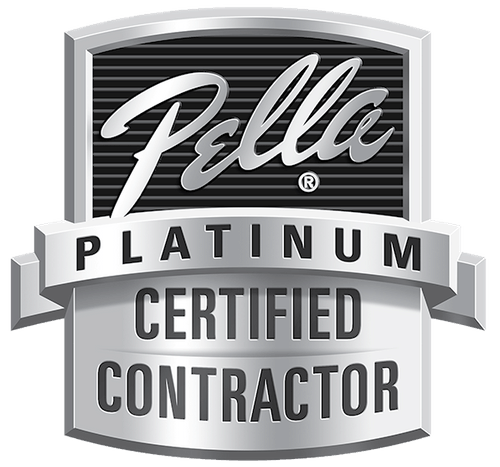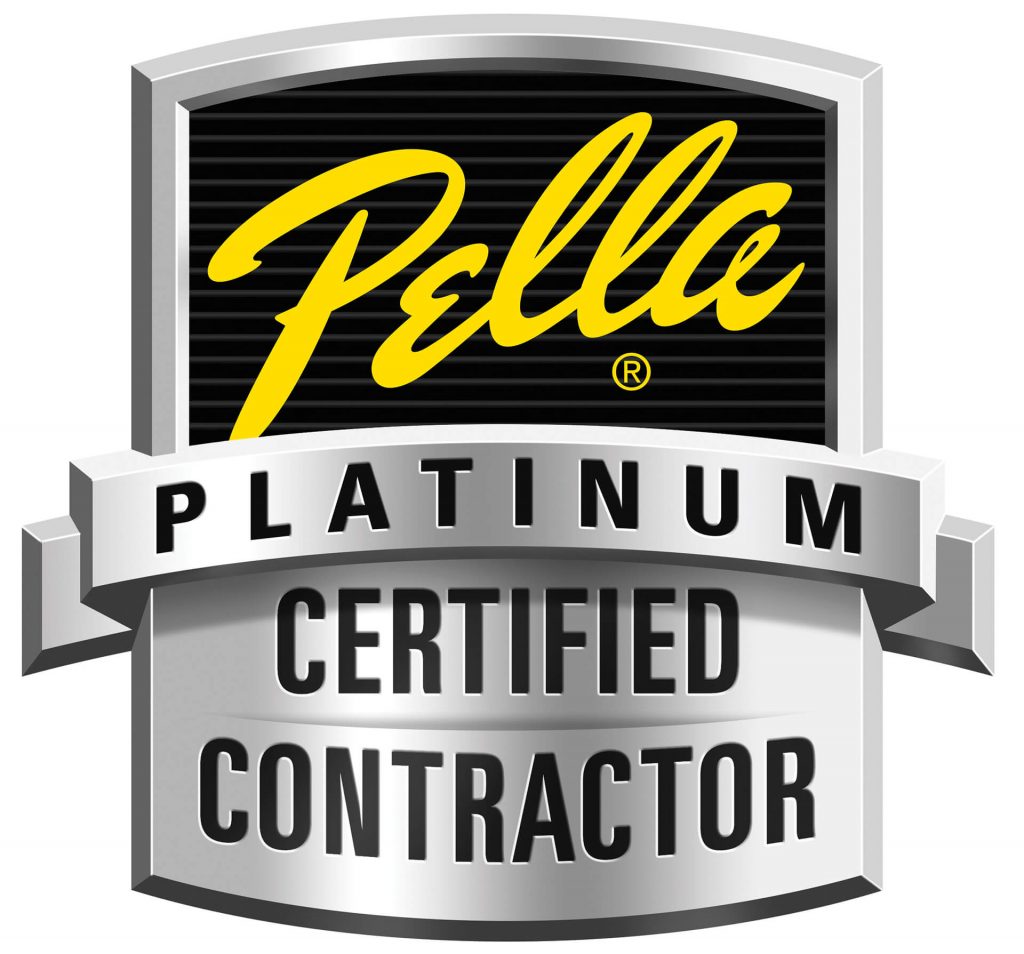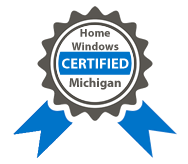Should I Replace 20-Year-Old Windows?
Dec 26, 2024As a responsible homeowner, you need to check the condition of your windows regularly if they are 20 years old or older. However, as time passes, windows lose their energy efficiency, show signs of wear and tear, and may also affect your home’s comfort, security, and appearance.
If you’ve noticed drafty air, condensation between panes, or visible damage, you may need to replace your windows. Replacing windows not only makes your home more energy efficient but can also add to its beauty and value.
Today, many modern window options offer a host of benefits, including energy savings, increased durability, and noise reduction. If you’re unsure whether to replace your existing windows or what the best option is, we’ll explain everything you need to know to make an educated decision.
In this guide, we will help you identify the signs that it’s time to replace your 20-year-old windows, explore the benefits of upgrading, and share what replacement options are available today. You’ll learn what to look for in signs of wear and how to evaluate your options so you can invest in your home’s future.
Signs It’s Time to Replace Your 20-Year-Old Windows
Windows, like all things, age, and with age come signs of wear that will affect your home’s comfort, safety, and efficiency. Windows over 20 years old will show these signs, so if you have some, you should be aware of them and fix the problem before it leads to bigger ones. You may want to replace your old windows if any of the following apply:
Drafty Windows
If your broken windows are no longer appropriately sealed, a draft will be noticeable around them. In the winter, drafty windows let warm air escape, and in the summer, they let cool air in, significantly increasing your heating and cooling costs. This inefficiency puts undue strain on your HVAC system, so you pay higher energy bills and are less comfortable in your home.
Condensation Issues
If you see condensation between the glass panes of a double-pane or triple-pane window, it usually means the insulating seal has failed. This failure allows moisture to build up between the glass layers, which compromises the window’s ability to insulate properly. If left untreated, this problem can eventually result in energy loss, making your home less energy efficient and harder to keep comfortable.
Physical Damage
If your windows are broken or cracked, have wood decay around the frames, or are otherwise visibly damaged, you know that they are not performing as they should. All these issues can endanger the security and safety of your home. However,, severe damage could also impact the entire integrity of the window, leaving you exposed to problems such as drafts, water infiltration, and mold growth.
Water Infiltration and Damage
If you notice water infiltration around all your windows, it can become a serious structural issue. As time goes on, the window frame can break down and become weak from water seeping through cracks in the frame around the seals or even through the window and neighboring walls. This moisture can also cause the growth of mold and mildew, and if left untreated, it can lead to long-term damage to your home’s structure and foundation.
UV Rays and Heat Loss
Older windows, particularly non-low-E coated windows, do a worse job at blocking harmful UV rays and retaining heat. Over time, UV rays will fade everything from your furniture to your flooring and other interior elements. Also, older windows without adequate insulation provide excessive heat loss in the winter and excessive heat gain in the summer, reducing your home’s energy efficiency. Old windows can be replaced with modern, energy-saving options, which will prevent these problems and give your home’s interior better protection.
Benefits of Replacing Old Windows
Replacing your old windows has a range of benefits, including making your home feel more comfortable, improving its appearance, and saving you money in the long run. Replacing older windows with newer, more efficient windows will greatly improve your home’s performance and value.
Now let’s take a look at the main benefits of replacing those old windows:
Energy Efficiency and Cost Savings
Triple and double-pane windows are modern products designed to provide better insulation, reducing your energy consumption by keeping your home cooler in summer and warmer in winter. The coatings on these windows provide better energy efficiency, and the sealing is advanced to minimize air leaks, thereby stopping the loss of heated or cooled air. New windows can dramatically reduce your heating and cooling costs by improving insulation, saving you energy over the long term, and making your home more comfortable.
Comfort
New windows can help keep a stable indoor temperature by minimizing drafts and preventing heat loss. Modern windows also reduce outside noise in addition to temperature control; your home will be a quieter, more peaceful place. Whether you live in a busy neighborhood or near a highway, upgrading your windows can help reduce noise pollution and let natural light into your home without sacrificing comfort.
Curb Appeal and Home Value
When you plan to replace your windows, modern, stylish ones can change the look of your home’s exterior. Sleek double-hung or casement windows bring a fresh, attractive look to your home and increase curb appeal. This will make your home look more appealing to potential buyers if you decide to sell. New windows are a great investment that increases your home’s overall market value, so you can get a higher return when you put your property on the market.
Durability and Maintenance
The worn-out seals, decaying frames, or faulty hardware of old windows can be a problem. Upgrading to modern materials like vinyl or fiberglass means you don’t have to deal with the typical roller system aging, stuck windows, or frame deterioration. Designed to be low maintenance, new windows are made with durable materials that resist decay, peeling, and fading, so you’ll spend less time upkeep and more time enjoying your home.
Types of Replacement Windows
If you’re planning to replace windows, choose the right type of windows for your home. You have quite a few options to choose from including the number of panes, the style, and the kind of glass.
In this section, we’ll take a look at some of the best options out there for your home, from the difference between triple-pane and double-pane windows to the most popular window styles to advanced glass options:
Triple Pane Windows vs. Double Pane Windows
Regarding insulation and energy efficiency, triple-pane types tend to trump double-pane windows. Triple pane windows are made up of three layers of glass offering to insulate better and offer much more soundproofing against the noise from the outside and extreme temperatures and air leaks. The triple pane can be costly but is perfect for homes in extreme climates where energy savings are key.
Double-pane windows are a good compromise between providing insulation and being cost-effective. Triple-pane windows are more affordable than double-pane windows but still offer great energy efficiency, which is why most homes choose them.
Double-pane windows are a great way to save on energy bills if you live in a moderate climate and don’t want to spend much on upfront costs.
Window Styles
Several styles of window frame replacements can improve the function of your home, as well as its appearance. Here are some of the most common window styles to consider:
- Double-Hung Windows: Vertical sliding sashes are classic windows with two sashes that move vertically. They offer great ventilation and are easy to repair.
- Casement Windows: Casement windows open outward, hinged on the side, and sell because they offer better airflow and an up-to-date, sleek look.
- Custom Designs: Custom window designs can be customized to suit your unique architectural style or to fit in specific spaces if you have a unique architectural style or need windows that fit specific spaces.
Every window style has its benefits, so profiling each style’s functionality, aesthetic, and space requirements will make your decision much easier.
Glass Options
Certain types of glass can improve energy efficiency and comfort in your home. Low-E glass is coated to reduce the amount of ultraviolet (UV) rays that enter your home, and it’s one of the best options available.
Low-E glass protects furniture, flooring, and artwork from fading and improves energy efficiency by blocking heat transfer. It is a smart choice for those looking to improve insulation and protect the interior of their homes, as it keeps the temperature more consistent, making the home more comfortable.
When placed over triple— or double-pane windows, Low-E Glass provides better protection and efficiency for homes in extreme climates. It reduces the impact of harsh outdoor conditions and keeps the indoor environment comfortable.
Factors to Consider Before Replacing Windows
Replacing your windows is a huge investment. These are key factors to consider before making a decision to make sure you’re making the right choice for your home. Here is what you need to know:
Age and Condition
If your windows are older than 20 years and show signs of water damage, wood decay, or poor insulation, it is time to replace them to avoid further problems and improve efficiency.
Proper Installation
When you hire professionals for the window installation service, you get your windows sealed properly and get better energy efficiency as well as longer performing windows to avoid the whole process of dealing with future leaks and misalignment.
Energy Savings in the Long Run
New windows can increase heating and cooling costs but are a smart investment because they will pay off over time with lower energy bills and greater comfort.
Custom Solutions for Homeowners
Decide if you want to replace all your windows at once or replace the most damaged ones first to solve your immediate problems, and then work on increasing your energy efficiency.
The Cost of Window Replacement
Replacing your windows is a major investment, but it’s well worth the cost, considering the energy savings, added comfort, and the rise in home value. Knowing what factors affect the cost of replacement will help you make a well-informed decision and budget accordingly.
Factors Influencing Costs
The cost of window replacement depends on numerous factors, including the size, material, and style of the windows. Standard sizes are more often the most expensive, but larger windows or custom designs will still cost more. Although more expensive than vinyl, materials like wood or fiberglass, premium styles, and additional features like grids or special coatings may also increase the cost. Also, if you need repairs because of rotting frames or damage from water, the cost of repairs will increase.
Saving Money in the Long Run
While the initial cost of new windows can be steep, modern, power-efficient windows can save on heating, cooling, and maintenance costs in the long run. New windows eliminate drafts and improve insulation, making your home more comfortable and less costly to heat and cool (which means lower utility bills). You’ll also save on long-term upkeep costs with minimal maintenance required.
Free Estimate from Adkins & Sons Windows
Contact Adkins & Sons Windows for a free estimate to get an accurate idea of the cost of your window replacement project. Your current windows will be professionally assessed, and you will receive personalized advice on the best solutions for your needs and budget.
Conclusion
Replacing your 20-year-old windows is a smart investment to increase your home’s energy efficiency, comfort, and appearance. As windows age, they become less effective insulators, increasing your energy bill and possibly causing damage.
Replacing windows with modern, energy-efficient windows can save energy, lower your heating and cooling costs, and improve your home’s curb appeal. The wide array of window styles, glass options, and materials available means you can find a solution that is both fit for purpose and stylish.
New windows are a good investment, whether you’re replacing single-pane windows with double-pane windows or swapping out wood frames for vinyl ones.
Adkins & Sons Windows cares about your home, so we’re committed to offering professional installation and custom window solutions to help you make the right choice for your home. If you’re not sure if it’s time to replace your windows or what best fits into your budget and needs, our free estimates and guidance from experts will help you make the right choice.
Take the first step towards a more energy-efficient, beautiful, and comfortable home by contacting Adkins & Sons Windows today for a free estimate!
FAQs About Replacing Old Windows
When is it worth replacing all my windows at once?
If multiple windows are showing signs of damage, inefficiency, or age-related wear, replacing them all at once can save you money on installation costs and provide uniform energy efficiency across your home.
How can I tell if my windows are showing signs of damage?
Look for visible cracks, condensation between glass layers, drafts, or water damage around the frames. These are clear signs that your windows may need replacing.
What is the difference between triple-pane and double-pane windows?
Triple-pane offers better insulation and noise reduction compared to double-pane windows due to an extra layer of glass and gas filling between panes, but they come at a higher initial cost.
How do replacement windows improve energy efficiency and natural light?
Replacement windows, especially energy-efficient models with Low-E glass, reduce heat loss and prevent drafts, improving insulation. They also allow more natural light in, enhancing the brightness and comfort of your home.






